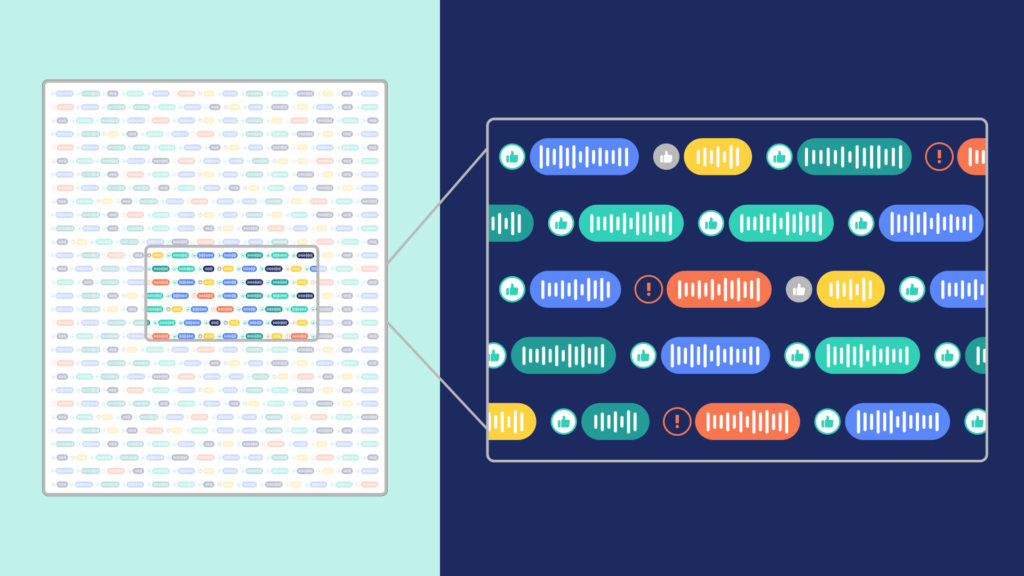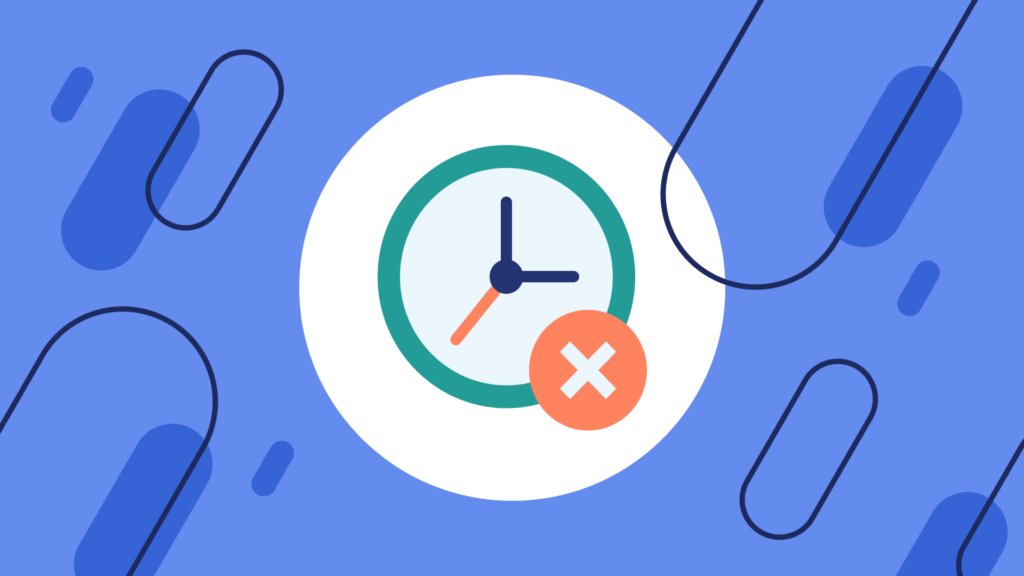
Automating data analysis to score customer interactions at scale.
Leverage CX insights from automation to audit agent interactions, save time and capacity, and evaluate data with confidence.
Get AI Insights nowAuthenticx analyzes customer conversations to surface recurring trends.
Your customers are talking. Are you listening?
Identify trends with high-volume data analysis to get actionable insights from comprehensive and relevant customer feedback.
See Authenticx in Action
Automating Data Analysis
Automating data analysis involves the use of software tools, algorithms, and artificial intelligence to process, analyze, and draw insights from data without the need for human intervention. Automating data analysis can revolutionize the way we analyze data in several ways. First and foremost, it can make the process faster. While traditional analysis methods such as manual data entry, processing, and analysis can be time-consuming, automation boosts efficiency and allows users to cut back on the amount of time they spend on manual processes.
Automation can also improve the accuracy of data analysis. Automated data analysis tools are less error-prone and can process large amounts of data with greater accuracy than humans. What’s more, data analysis tools are capable of performing tasks such as data cleaning, data transformation, and data modeling automatically. This can free up human analysts to focus on higher-level tasks, such as interpreting results and making decisions based on insights.
There are many different types of data automation software. As such, if you’re considering implementing automation tools for data analysis, it’s important to outline your specific needs to determine the best possible software for your business. Here are some of the most common types of data automation software on the market today:
- ETL (Extract, Transform, Load) tools: These tools automate the process of extracting data from various sources, transforming it into a format suitable for analysis, and loading it into a database or data warehouse.
- Data preparation tools: These tools automate the process of cleaning, filtering, and formatting raw data to make it ready for analysis.
- Business intelligence (BI) tools: BI tools automate the process of visualizing and reporting on data to help businesses make informed decisions.
- Predictive analytics tools: Organizations that prioritize analytics should consider using predictive analytics tools. These automate the process of analyzing data to identify patterns and make predictions about future outcomes.
Automation software is provided by data automation companies, which specialize in developing software tools and solutions to automate the process of data management, processing, and analysis. These companies use cutting-edge technologies to develop customized software solutions that meet the specific needs of their clients. Data automation companies help organizations streamline their data management processes and make better use of the data they collect.
Authenticx is one such example of a data company that helps businesses to obtain better insights into their data. Designed specifically for healthcare companies, Authenticx’s software allows users to listen to and analyze customer voices to identify issues that are disrupting the customer journey. This, in turn, enables them to drive better decision-making to improve patient outcomes.
Data Automation Examples
Viewing data automation examples is a great way to learn more about the data automation process. Machine learning is one of the most common types of data automation. A good machine learning data analysis example might involve a hospital that wants to improve patient outcomes by identifying patients who are at high risk of developing complications during their hospital stay. The hospital has a large amount of patient data, including demographic information, medical history, and clinical data such as vital signs and lab results.
To identify high-risk patients, the hospital could use a machine learning algorithm. This algorithm would be trained on a subset of the patient data using features such as age and medical history to predict the likelihood of complications. By identifying which patients are at high risk of complications, the hospital can intervene early with preventative measures such as antibiotics, blood thinners, or more frequent monitoring.
Automated analytics is another popular type of automation. Automated analytics examples include automated report generation, natural language processing, and sentiment analysis. This ties directly into descriptive analytics, which is a type of data analysis that focuses on summarizing and describing the characteristics of a dataset.
By creating and implementing a solid data analytics platform architecture, you can enable scripting for data analysis. Scripting is the process of using programming languages such as Python, R, or SQL to automate data analysis tasks. With scripting, data analysts can write code to perform repetitive or complex data analysis tasks. This can ultimately save businesses time and money.
With the growing demand for data automation projects and software, more jobs are becoming available in the space. Data automation jobs involve developing and implementing automated data analysis solutions to help organizations streamline their data analysis processes.
Data Automation Tools
Data automation tools are software applications or platforms that help organizations automate their data analysis processes. These tools help organizations streamline their data processing, reduce errors, and improve the speed and accuracy of their analysis. The following are some of the most popular data analytics automation tools:
- Data integration tools: These tools enable organizations to integrate data from multiple sources and transform it into a format that can be easily analyzed.
- Data visualization tools: Data visualization tools allow organizations to create interactive dashboards and visualizations that enable users to explore data and gain insights quickly and easily.
- Data quality tools: Data quality tools are used to help organizations ensure that their data is accurate, complete, and consistent by identifying and correcting errors and anomalies.
- Process automation tools: Tools like these are used to automate repetitive or manual data processing tasks, such as data cleaning and data transformation.
- Natural language processing (NLP) tools: NLP tools analyze and process natural language data, such as customer feedback or social media posts, to extract insights and identify trends.
- Machine learning tools: These tools can be used to automatically analyze large datasets and identify patterns or anomalies that may be difficult to identify through manual analysis.
- Audit data analytics tools: Audit data analytics tools are software applications that enable auditors to analyze large volumes of data quickly and efficiently, helping to identify trends and patterns that could indicate areas of potential risk or fraud.
- Descriptive analytics tools: Descriptive analytics tools allow organizations to analyze historical data and gain insights into past performance, trends, and patterns. These tools help organizations to understand what has happened in the past and identify areas for improvement.
- Prescriptive analytics tools: Prescriptive analytics tools use advanced analytics techniques to provide organizations with recommendations on the best course of action to take in a given situation.
How It Works
Gain a deeper level understanding of contact center conversations with AI solutions.
Learn MoreAggregate
Pull customer interaction data across vendors, products, and services into a single source of truth.
Analyze
Collect quantitative and qualitative information to understand patterns and uncover opportunities.

Activate
Confidently take action with insights that close the gap between your organization and your customers.
Data Automation
Data automation is the process of using software tools to automate the collection, processing, and analysis of data. The goal of data automation is to reduce manual effort, increase efficiency, and improve the accuracy and reliability of data analysis.
Popular data automation techniques include:
- Data integration: This involves integrating data from multiple sources, such as databases, spreadsheets, and web applications, into a single system.
- Data cleansing: Data cleansing is the process by which errors and inconsistencies in data are identified and corrected. Common errors include missing values, incorrect formatting, or duplicate records.
- Data transformation: This process converts data from one format to another, such as transforming unstructured data into structured data.
- Data modeling: Data modeling involves using statistical and machine learning techniques to build models that can be used to predict future outcomes or identify patterns in data.
As mentioned previously, audit data analytics tools can be particularly helpful when it comes to auditing. Audit data analytics can be used to perform a wide range of tasks in the audit process, including risk assessment and testing controls. This is another crucial technique for managing and automating data-related processes.
To implement tools and techniques most effectively, it can be helpful to develop a data analytics reference architecture or data analytics test of details framework. Structures like these can offer strategic guidance on how to automate data in the best way possible for your business. By following a proven approach to data automation, you can do more with the data that’s available to you.
Artificial Intelligence In Data Analytics
Artificial intelligence (AI) is rapidly transforming the way we analyze data by providing powerful new tools and techniques for processing, interpreting, and deriving insights from large volumes of data. AI is particularly well-suited to handling complex, unstructured data, which can be difficult to analyze using traditional data analytics methods.
One of the key ways that artificial intelligence in data analytics is changing the digital landscape is through the use of machine learning algorithms. These algorithms can learn from historical data to identify patterns and relationships that can be used to predict outcomes or to identify issues and potential risks. Machine learning can be used for a wide range of tasks, including predictive modeling, fraud detection, and natural language processing.
AI data analysis software analyzes data with human-like intelligence and brings to light critical details that companies might otherwise have overlooked. Automating data analysis using artificial intelligence has a number of benefits, including greater speed and efficiency. Rather than employing an actual human to perform time-consuming, manual data processes, you can offload this burden to a software platform.
Descriptive analytics in big data is another field in which AI has proven to be tremendously helpful. Descriptive analytics is concerned with understanding what has happened in the past, and AI techniques can help to identify patterns and trends in historical data that can be used to inform decision-making. Participating in data analytics and artificial intelligence courses can give you a better understanding of how AI works in descriptive analytics, big data, and more.